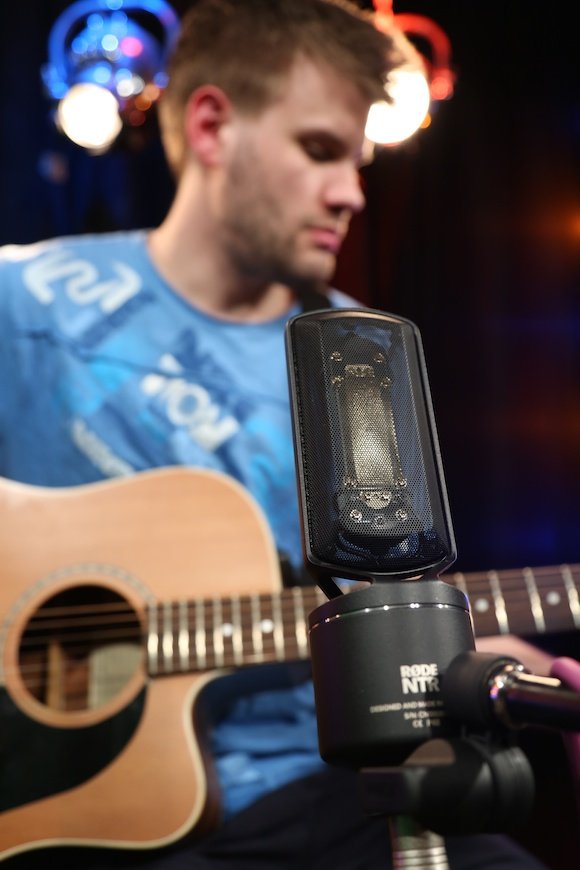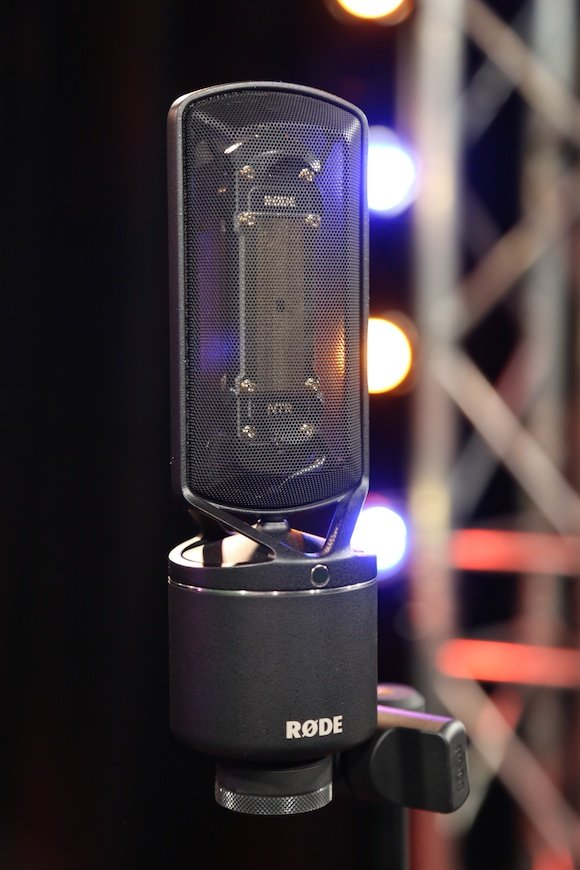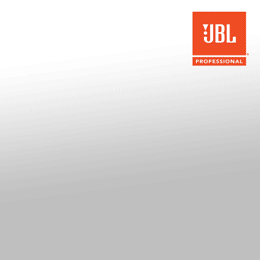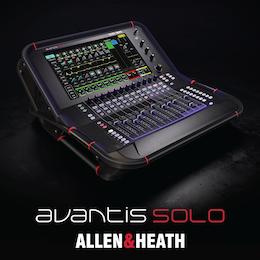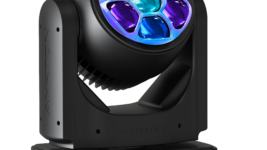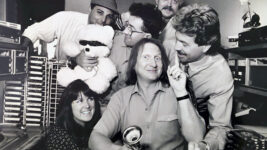Subscribe to CX E-News
A thing of beauty
Just occasionally something so beautiful lands on my desk I’m given cause to stop what I’m doing, and take time out just to admire it. In the case of the NTR I also felt the need to make everyone else in the office stop what they were doing too so they could join in.
The NTR is a gorgeous piece of equipment. It’s opulent in its design, yet at the same time has an absolute sense of purpose. I liked it even before I’d plugged it in to anything. At just over 1kg it is in one sense almost absurdly heavy, but on the other hand you wouldn’t feel bad about handing over your hard earned cash for one. Every detail has been attended to – even the packaging in which the NTR arrives is beautiful.
Ribbon mics are an interesting kind of thing for a number of reasons. First up they’re pretty fragile, so they don’t generally tour well. Traditionally the application of phantom power to a ribbon mic would result in its complete and assured destruction, though nowadays this is not always true. Finally, ribbon mics have typically been regarded as ‘warmer’ than their dynamic counterparts.
The practicalities of constructing a ribbon mic mean it is hard to make it more robust without affecting its performance. Looking through the grille on the NTR, you can see the ribbon motor suspended on shock mounts internally within the chassis of the mic. The mic arrives with a transit screw installed, which secures the ribbon motor by tensioning it against the shock mounts. You need to remove the screw prior to using the mic, and replace it once you’re done. It doesn’t make the NTR indestructible, but it does add an additional level of protection. Note that to install or remove the transit screw the mic must be secured in the directly upright position. Maximum SPL to which the mic should be exposed is 130dB.
Internally the base of the mic houses a step-up transformer and active signal balanced preamp stage. These active electronics not only buffer the ribbon element from phantom power, but in fact they require it in order to operate. ‘P48” etched into the base of the mic provides visual confirmation that it’s okay to hit the +48V button.
Flipping through my trusty Rycote mic data book, I came to the realization that many (if not most) dynamic microphones roll off somewhere between 50 and 100Hz, and a few at considerably higher frequencies still. Most ribbon mics by comparison have smoother low frequency delivery, though typically a little bumpiness in the HF response is apparent somewhere between 10 and 20kHz. The NTR plot follows this convention, so on paper it behaves as it’s generally expected a ribbon microphone should.
RØDE makes the NTR right here in Australia. The ribbon element is laser cut from a 1.8 micron sheet of aluminium, then shaped and tensioned before being set into the frame of what becomes the ‘ribbon motor’. Such high precision operations are performed by machine, which means they are repeatedly accurate. The RØDE process results in a ribbon which is very agile, and that means it’s able to respond efficiently to high frequencies. This results in a mic that has the low end warmth of a classic ribbon, as well as excellent high end detail. Not to mention a dynamic range of 115dB SPL. It’s pretty awesome.
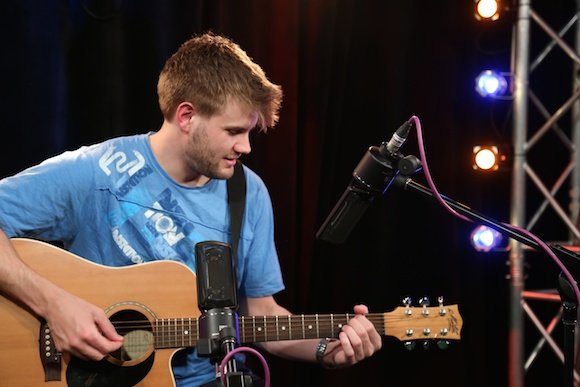
The NTR has a figure eight polar pattern, and it’s important to remember that this applies in three dimensions – not just two. The frame which surrounds the ribbon motor gives you a good
visual indication of where the ‘null’ of the mic is located. As with all figure eight mics, some experimentation is advisable in order to find the best combination of direct and reflected sound. RØDE advise monitoring the mic during placement to find the optimal position, and having done some experimentation I can confirm this is a good idea.
I organised a guitarist friend to visit the CX studio, and we spent an afternoon playing around with different configurations of a pair of NTR mics. I made several observations, the first of these being that the pattern is really well controlled. I set up one mic on the singer and the other on the guitar. I was careful to position each mic such that the other mics intended source was in the null of the first (ie; the guitar was in the null of the vocal mic). The separation between the sources was excellent, with each mic only picking up some reflections of the sound source located in its null.
Another observation I made was that the ‘lobes’ of the figure eight feel almost elongated – not like a shotgun mic, but the NTR deals with a bit of distance well. I used a pair of NTRs spaced about a foot apart from each other, and about 15 inches from the acoustic guitar. According to the conventional rules of avoiding phase problems between two mics on the same source, this configuration shouldn’t have worked. But it did work, and moreover it yielded the most pleasing results of all we tried.
I tried the pair of NTRs set at right angles next to each other in a lazy attempt at an XY configuration. I was trying to pick up the vocal and the guitar all at once, but it didn’t work out as I’d hoped. In hindsight, I think the two mics probably crowded each other a little, and this gave a thinned out result. If I were determined to try this again I might invert one mic and use an end-to- end configuration, but ultimately I think the XY configuration is better suited to other polar patterns anyway.
The final observation was more one of practicality – ordinary mic stands aren’t up to the job of supporting the weight of the NTR. Make sure you use a good quality stand with positive mechanical locking to avoid ‘droop’! I used the NTR off-axis and at a good distance when recording
voice, but with the addition of a pop filter you can get closer and more on axis. Just remember that no ribbon mic responds well to violent plosives.
I think the wonderful thing about the NTR is that adjusting its position relative to the source gives you great scope to change what it delivers. It’s almost ironic that such a mic of such imposing appearance is capable of such intricate HF response – fricative consonants are produced to the minutest detail without a hint of sibilance or harshness. Everything’s there but nothing is overstated, and I love it.
I’m not sure how often I’d break out the NTR (or indeed any figure eight mic) for stage use, since ambient noise would be a problem and I think it’s better suited to more delicate work anyway. Putting it on a rock stage would be kind of like driving a Lamborghini down to the shops to buy milk. Sure, it would do the job, but it would be a bit of waste and you might not find it exactly where you left it.
If on the other hand you found yourself in an orchestral situation or even just doing a gig in a nice concert hall, the NTR would be far more applicable. It is a beautiful microphone in every respect, and for anyone engaged in studio recording on a regular basis it should be an obvious choice. It’s also about half the price you’d expect it to be, which makes it phenomenally good value.
- Brand: RØDE
- Model: NTR
- RRP: AUD$899.00 inc GST
- Product Info: www.rode.com
- Distributor: www.rode.com
First published in CX Magazine (October, 2015)
Subscribe
Published monthly since 1991, our famous AV industry magazine is free for download or pay for print. Subscribers also receive CX News, our free weekly email with the latest industry news and jobs.


